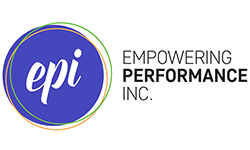Mentoring Is More Important Than Ever
Most of us have mentors in our personal lives: trusted people we turn to for advice when we face life’s hurdles, people who are our greatest cheerleaders during personal victories. And many of us seek out a mentor during times of professional transitions such as career changes and new roles.
But look around your organization. How many team members have a mentor as part of their ongoing work experience?
As the workforce continues to change, mentoring plays an ever-increasing role in how organizations can and should improve employee retention and performance. In fact, over 79% of Millennials see mentoring as crucial to their success.
Organizations need to keep up! And supporting employee mentorship opportunities can help. Before your organization jumps on the mentoring bandwagon, however, let's debunk a few common mentoring myths from best-practice mentoring research.
Myth #1: Mentoring is the same as coaching.
A mentor is "a trusted counselor or guide.” And, although similar, mentoring is not coaching. While coaching certainly can have a place within mentoring, coaching is used to improve specific job performance. But mentoring is more personal and “holistic.” Mentoring focuses on the mentee’s overall personal improvement.
A successful mentor is a positive role model who offers non-judgmental support and brings their own experiences to bear
Myth #2: A mentee should only have one mentor.
That’s a lot of pressure...on the mentee and the mentor! The truth is that it can be worthwhile to get differing perspectives on a particular issue. Also, it’s unreasonable to expect one person to have the knowledge and experience to advise you over the full range of your working life. You’ll benefit the most by developing a network of mentors over time.
Myth #3: Mentoring is a structured, formal long-term relationship that must occur in person.
In this fast-paced business world, people job hop more than ever. So, it’s probably unrealistic to expect a long-term mentoring relationship that transcends the realities of career changes and rapidly shifting priorities. Some organizations may have a formal mentoring program in place, but mentoring can also exist within an informal framework.
Although structure will inherently come from the objectives of the mentee and the availability of the mentor, be sure to stay flexible. And with the technology we have at our disposal, it’s now possible to connect through many different tools.
Myth #4: Mentoring is always older people advising younger ones.
People of all ages and career levels can get a lot out of both mentoring and being mentored. For example, with rapidly occurring innovations in technology, it makes sense for a more junior “tech-savvy” person to advise a senior person. In fact, for a cohesive intergenerational team culture, encouraging and creating opportunities for "reverse mentoring" is highly valuable.
Reverse mentoring provides an environment where information and insights can flow freely and where the organizational hierarchy is flattened. And don’t overlook the value of your peers; they can be effective mentors.
Myth #5: Mentoring is only for the mentee.
Like friendship, mentoring is a two-way street. The mentee and the mentor naturally come to the table with different outlooks and, so, can learn from each other. Don’t just think about what a potential mentor has to offer you—also think about what you have to offer.
Next, identify what mentoring could look like at your organization. Here are a few tips to get you started:
At the next team meeting, encourage team members to reflect on two questions: What do I have to offer? What do I want to learn? Have team members determine if there are natural mentoring partnerships that arise.
Inspire team members to think about what they want to accomplish, what their objectives are. And encourage them to seek out the people in their professional networks who could be a good fit for a mentoring relationship.
Identify individuals on your team who may be successful mentors based on their skills or personalities. Invite them to become a mentor and ask how you can support them in this role.
Invite mentorship partnerships to develop across teams or departments. This is an excellent way to promote interorganizational relationships and team building.
And, as always, if you need help establishing mentorships or coaching to boost your organization's retention and performance, we're here for you. Reach out!

